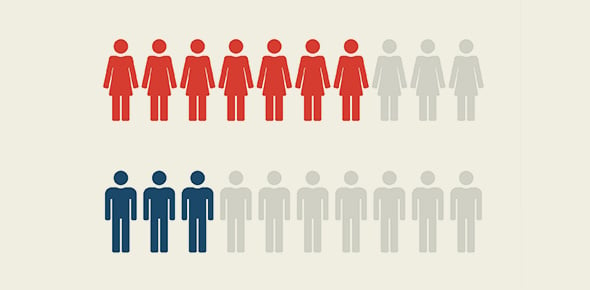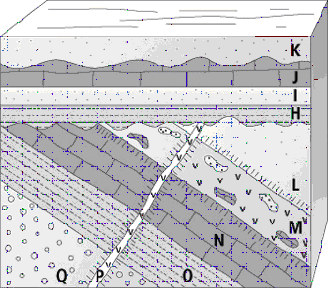Unit 1 Review Quiz

- 1.
TRUE or FALSE: Homologous structures have the same function in different species.
- A.
True
- B.
False
Correct Answer
B. FalseExplanation
Homologous structures are anatomical features that have a similar structure but may not necessarily have the same function. These structures are derived from a common ancestor and may have been modified over time to serve different purposes in different species. Therefore, homologous structures do not have the same function in different species, making the given answer "False" correct.Rate this question:
-
- 2.
Which mechanism of evolution causes a change in a POPULATION over time?
- A.
Mutation
- B.
Natural Selection
- C.
Gene Flow
- D.
Genetic Drift
Correct Answer
B. Natural SelectionExplanation
Natural selection is the mechanism of evolution that causes a change in a population over time. It is the process by which certain traits become more or less common in a population based on their ability to survive and reproduce. Individuals with advantageous traits are more likely to survive and pass on their genes to the next generation, while individuals with disadvantageous traits are less likely to reproduce. This leads to a gradual change in the population's genetic makeup over time, as favorable traits become more prevalent and unfavorable traits become less common.Rate this question:
-
- 3.
Which mechanism of evolution causes the initial change in the traits of an INDIVIDUAL, adding genetic diversity?
- A.
Mutation
- B.
Natural Selection
- C.
Gene Flow
- D.
Genetic Drift
Correct Answer
A. MutationExplanation
Mutation is the correct answer because it is the mechanism of evolution that causes the initial change in the traits of an individual. Mutations are random changes in the DNA sequence, which can result in new genetic variations. These variations can then be passed on to future generations, contributing to genetic diversity within a population. Natural selection, gene flow, and genetic drift can all act on these mutations, but they do not directly cause the initial change in traits.Rate this question:
-
- 4.
The graphs show the change in the population of fish over time. Some fish have spines (with spines) while others do not have spines (no spines). What is the trend you see over time in these graphs and how can natural selection make this occur?
- A.
There's the same number of fish with no spines and with spines because natural selection produces diversity
- B.
There's a higher number of fish with no spines because all of the fish mutated to have no spines
- C.
There is a higher number of fish with spines over time because the fish with spines are better able to survive and reproduce
- D.
There is a higher number of fish with no spines over time because the fish with no spines were better able to survive and reproduce
Correct Answer
D. There is a higher number of fish with no spines over time because the fish with no spines were better able to survive and reproduceExplanation
Natural selection is the process by which individuals with advantageous traits are more likely to survive and reproduce, passing on those traits to future generations. In this case, the trend observed is that there is a higher number of fish with no spines over time. This suggests that the fish without spines have a better chance of survival and reproduction, leading to an increase in their population. Therefore, natural selection favors the fish without spines, as they are better adapted to their environment and have a higher fitness.Rate this question:
-
- 5.
What can you conclude based on this drawing?
- A.
Fossils in layer Q are younger than layer H
- B.
Fossils in layer Q are older than layer H
- C.
Fossils in layer J are older than layer I
- D.
Fills in layer P are younger than layer K
Correct Answer
B. Fossils in layer Q are older than layer HExplanation
The fossils at the bottom will be older than the fossils at the topRate this question:
-
- 6.
These limbs provide evidence of common ancestry because they
- A.
Have the same basic structure
- B.
Perform the same function
- C.
Are the same size
- D.
Are parts of mammals
Correct Answer
A. Have the same basic structureExplanation
The fact that these limbs have the same basic structure suggests a common ancestry because it implies that they have evolved from a common ancestor. This similarity in structure indicates that the limbs share a common developmental pathway and genetic blueprint, which is a strong indicator of common ancestry.Rate this question:
-
- 7.
The presence of wings in bats, birds, and insects is an example of a(n):
- A.
Homologous structure
- B.
Vestigial structure
- C.
Karyotype structure
- D.
Analogous structure
Correct Answer
D. Analogous structureExplanation
This is an analogous structure because they have different structures (different ancestors), but the same functionRate this question:
-
- 8.
Why are these considered analogous structures, not homologous structures?
- A.
They have the same structure but a different purpose
- B.
Even though they have the same structure, they did not have a common ancestor with that structure
- C.
They have completely different structures and purposes
- D.
They have a common ancestor with the same trait
Correct Answer
B. Even though they have the same structure, they did not have a common ancestor with that structureExplanation
These structures are considered analogous because even though they have the same structure, they did not have a common ancestor with that structure. Homologous structures, on the other hand, are structures that have a common ancestor with the same trait. Therefore, since these structures did not evolve from a common ancestor with the same structure, they are considered analogous rather than homologous.Rate this question:
-
- 9.
What is a trait that animals and fungi have in common?
- A.
Cell Walls made of Chitin
- B.
Both are autotrophs
- C.
Both are heterotrophs
- D.
Both are motile (can move around)
Correct Answer
C. Both are heterotrophsExplanation
Both animals and fungi share the trait of being heterotrophs. This means that they obtain their nutrients by consuming organic matter from other sources. Unlike autotrophs, which can produce their own food through photosynthesis, both animals and fungi rely on external sources for their energy and nutrients. This common characteristic of being heterotrophs distinguishes them from autotrophic organisms.Rate this question:
-
- 10.
Select all of the kingdoms below that are Eukaryotes (check all that apply)
- A.
Animalia
- B.
Bacteria
- C.
Archaebacteria
- D.
Plantae
- E.
Fungi
- F.
Protista
Correct Answer(s)
A. Animalia
D. Plantae
E. Fungi
F. ProtistaExplanation
The correct answer includes Animalia, Plantae, Fungi, and Protista. These are all kingdoms that belong to the domain Eukaryota, which consists of organisms with eukaryotic cells. Eukaryotic cells have a true nucleus and membrane-bound organelles, distinguishing them from prokaryotic cells found in Bacteria and Archaebacteria.Rate this question:
-
- 11.
What's the difference between prokaryotes and eukaryotes?
- A.
Prokaryotes do not have membrane bound organelles (like a nucleus), but eukaryotes do
- B.
Eukaryotes do not have membrane bound organelles (like a nucleus), but prokaryotes do
- C.
Prokaryotes are organisms that can make you sick, while eukaryotes do not make you sick
- D.
Prokaryotes are all autotrophic, while eukaryotes are all heterotrophic
Correct Answer
A. Prokaryotes do not have membrane bound organelles (like a nucleus), but eukaryotes doExplanation
Prokaryotes are single-celled organisms that lack a nucleus and other membrane-bound organelles, such as mitochondria or endoplasmic reticulum. In contrast, eukaryotes are more complex organisms that have a nucleus and various membrane-bound organelles. This difference in cellular structure is one of the key distinctions between prokaryotes and eukaryotes.Rate this question:
-
- 12.
What is the correct order of taxonomic groups from most general to most specific?
- A.
Kingdom, Phylum, Order, Class, Family, Genus, Species
- B.
Kingdom, Phylum, Class, Order, Family, Genus, Species
- C.
Species, Genus, Family, Order, Class, Phylum, Kingdom
- D.
Species, Family, Genus, Order, Class, Phylum, Kingdom
Correct Answer
B. Kingdom, Phylum, Class, Order, Family, Genus, SpeciesExplanation
The correct order of taxonomic groups from most general to most specific is Kingdom, Phylum, Class, Order, Family, Genus, Species. This order follows the hierarchical classification system used in taxonomy, where organisms are grouped based on their shared characteristics. The kingdom is the broadest category, followed by phylum, class, order, family, genus, and species, which is the most specific category.Rate this question:
-
Quiz Review Timeline +
Our quizzes are rigorously reviewed, monitored and continuously updated by our expert board to maintain accuracy, relevance, and timeliness.
-
Current Version
-
Mar 19, 2023Quiz Edited by
ProProfs Editorial Team -
Dec 12, 2017Quiz Created by
Bingmanl
- Continent Quizzes
- Earth Science Quizzes
- Easy Geography Quizzes
- Fictional Geography Adults Quizzes
- Five Themes Of Geography Quizzes
- Geology Quizzes
- Human Geography Quizzes
- Imperialism Quizzes
- Island Quizzes
- Land Quizzes
- Latitude And Longitude Quizzes
- Location Quizzes
- Nation Quizzes
- Nature Quizzes
- Navigation Quizzes
- Ocean Quizzes
- Physical Geography Quizzes
- Planet Quizzes
- Regional Geography Quizzes
- Remote Sensing Quizzes
- World Geography Quizzes
 Back to top
Back to top







